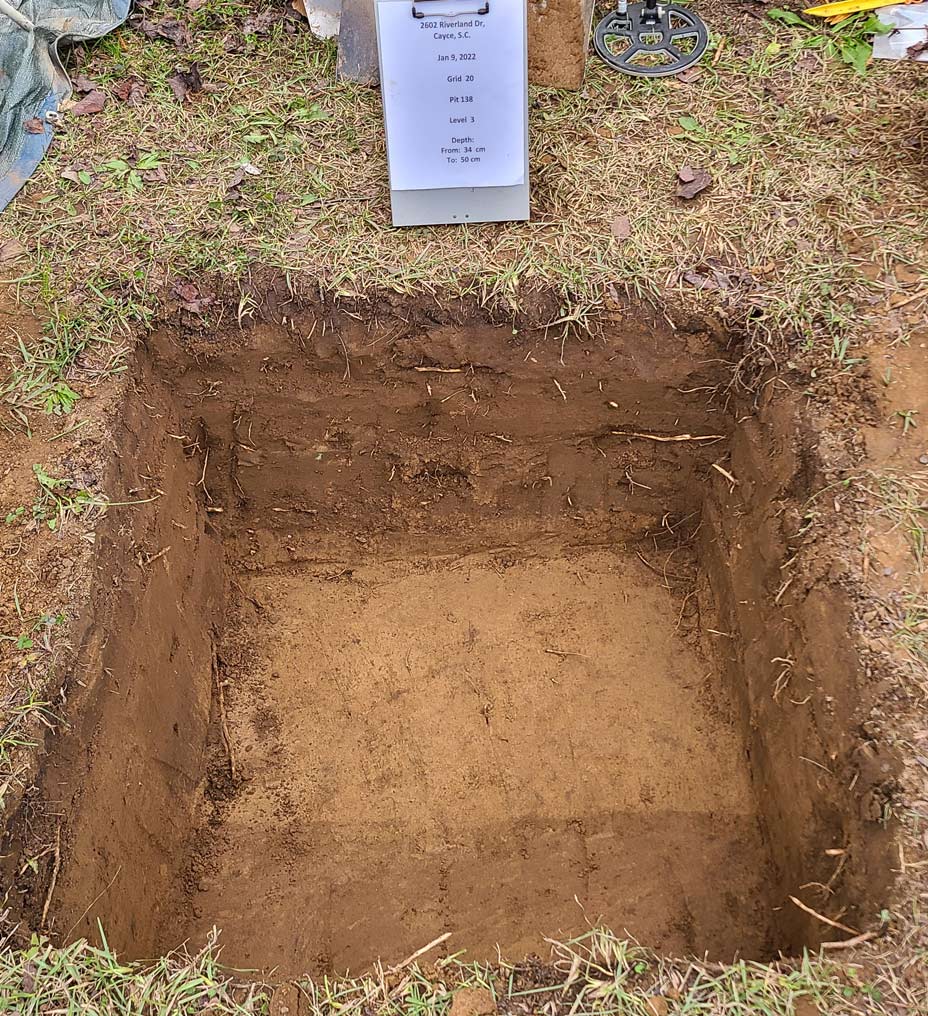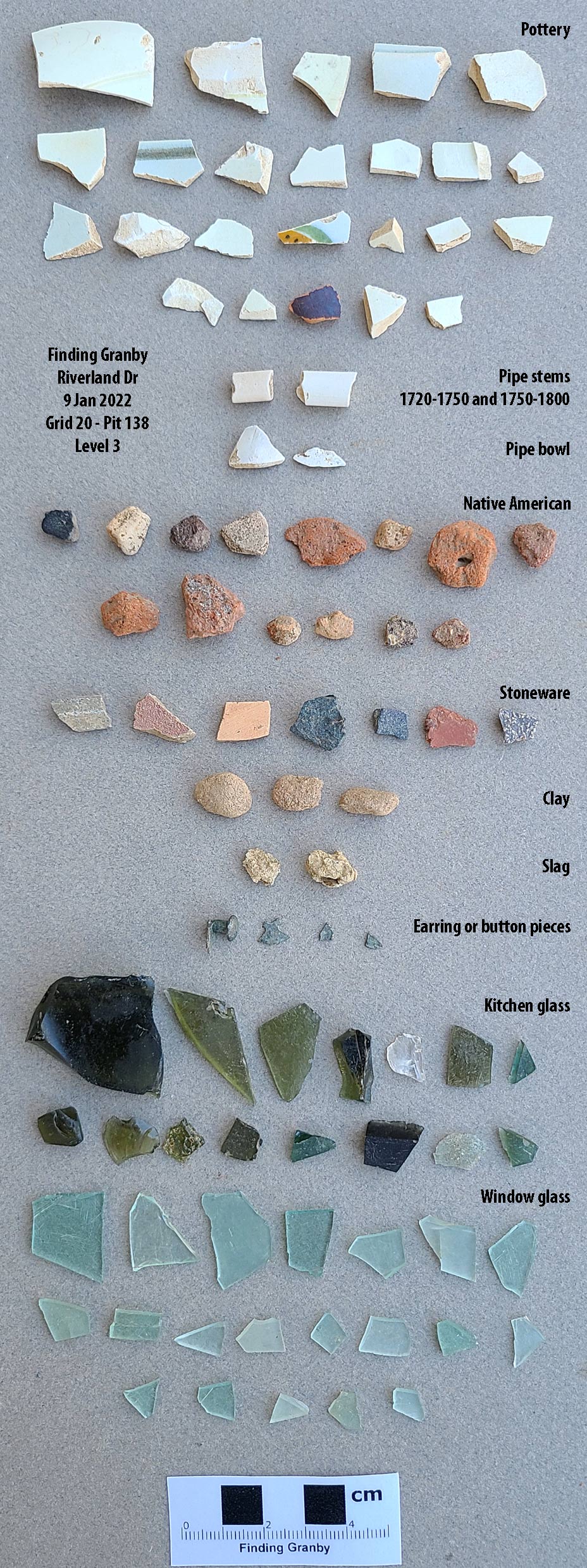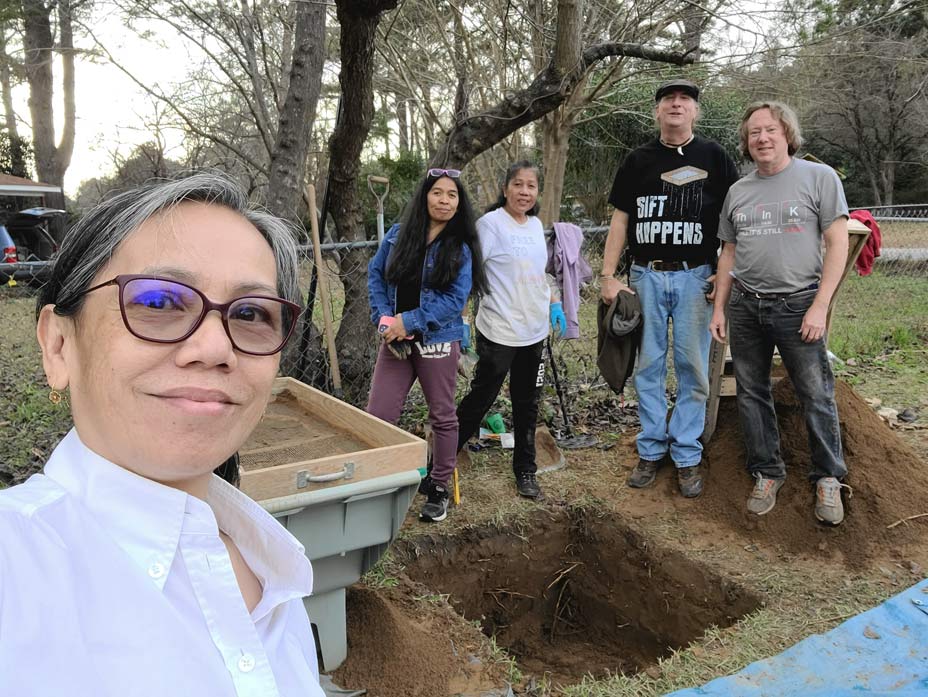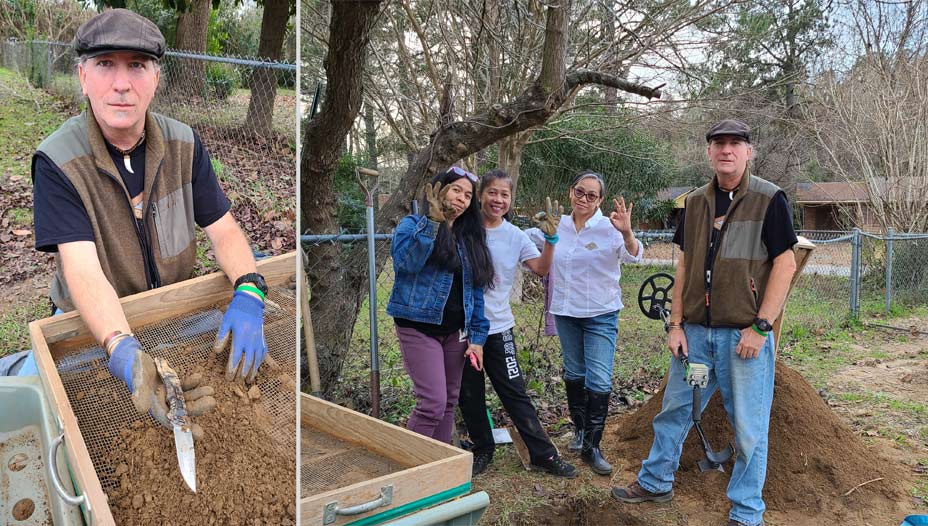Pit 138: Level 3
Completed on January 9, 2022, by Josephine Bachman, Jocelyn and DC Locke, Odess and David Brinkman. Artifact numbers continued to climb with a large number of pottery pieces including one with a hand painted image of a watermellon (seeds included.)
Watermelon originated in the northeastern African desert, where it was domesticated for water and food there over 4000 years ago. Egyptian King Tutankhamun was buried with watermelon seeds 3,300 years ago. Sweet watermelons first emerged in Mediterranean lands approximately 2000 years ago. It was being cultivated in India by the 7th century, and by the 10th century, it had found its way to China.
The Spanish brought watermelon to the Americas in the 1500s. American Indians are believed to have started cultivating the fruit shortly after that. European colonists also brought watermelon seeds with them as they settled in the Americas. It was found growing in Florida as early as 1576. Thomas Jefferson grew watermelon at Monticello, and, by the early part of our nation's history, it was being grown by Native Americans from the Mississippi Valley south to Florida. In the Midlands of South Carolina, in the 1800s, Nassau was the name given to a small island in the Broad River above the present Highway 126 bridge into Columbia. The island is no more, but in its heyday, the site was a good spot for growing watermelons, and for chicken fights on Sunday.
Also found in level three of pit 138, a 1720-1750 pipe stem and a rare 1750-1780 pipe stem. A good number of stoneware pieces were found as well as Native American pottery pieces. We also found what may be the pieces of a tin earring or button and buckle pieces and a small hook. Overall, it was a very good level. And, as found in most of the pits in this row, we found the obvious archaeological feature of the 1960s gas line trench.
Pit 138: Level 3 produced:




